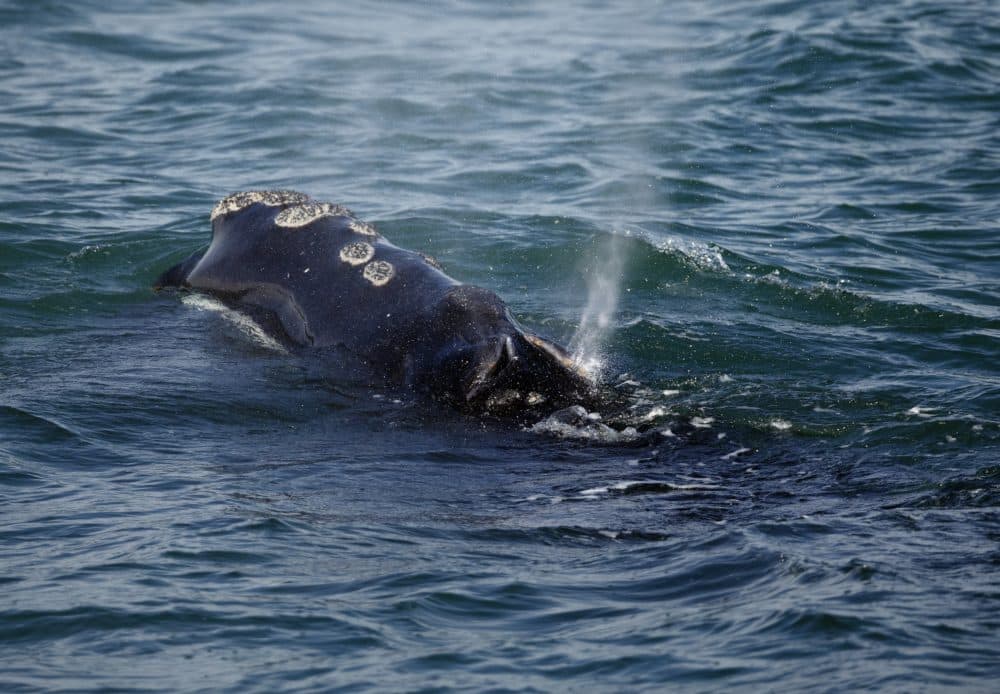Advertisement
Atlantic Lobster Board Moves Toward Reducing Rope In Effort To Save Right Whales
Resume
A consortium of Atlantic states fisheries managers is calling for broad changes to the gear lobstermen use, in an effort to reduce risks posed to the endangered North Atlantic right whale and to ward off potential federal action that could be even more challenging for the industry.
There are roughly 410 right whales left in the world, and they are at risk of potentially fatal entanglements with vertical rope lines lobstermen and other marine harvesters use to position and haul their traps.
At a meeting of the Atlantic States Marine Fisheries Council in Virginia, its lobster board voted unanimously to set in motion the process that could lead to major changes in the East Coast’s lobster industry.
“I don’t want NOAA making decisions on what this lobster fishery is going to look like in the future,” says Patrick Keliher, commissioner of the Department of Marine Resources for Maine, home to the country’s dominant lobster fishery, which landed some 110 million pounds of lobster in 2017, worth more than $450 million at the dock.
Keliher says that the National Oceanic and Atmospheric Administration is developing a “biological opinion” that could include a formal “jeopardy” finding for the right whales, which under the federal Endangered Species Act could lead to severe restrictions on the state’s harvest.
“Our role as a board should be, how can we as a board and a management body and as individual jurisdictions reduce risk to the right whales?” he says.
David Borden, a Rhode Island industry representative to the board, emphasized the importance of trying to forestall federal action.
“If we want to control our own future on this I would point out we have to get ahead of the issue, instead of responding to the issue. And that carries a lot of uncertainty,” he says.
The board approved for further development, public comment and eventual final enactment a slate of potential actions aimed at reducing vertical rope by 20 percent to 40 percent in most areas. Those could include limits on the number of traps lobstermen are allowed to place in the water, changes in gear configuration and even seasonal closures.
Conservationists commended the board for being proactive, but also called for more.
“This is a time for bold action, not conservative action,” says Jane Davenport of the nonprofit Defenders of Wildlife.
Davenport called for a range of rope reductions of up to 50 percent. She says that whatever the federal government finds, the best available science shows that female right whales stand a 95 percent chance of harmful entanglements during their fertile years.
“Entanglements are already causing jeopardy to the North Atlantic right whale in terms of both lethal and the sublethal effects of affecting reproduction,” she says.
Patrice McCarron, executive director of the Maine Lobstermen’s Association, told the board her members are skeptical that they are as responsible for the whale’s fate as conservationists say.
“We do acknowledge that we play a role. And our fishery needs to change," she says. "This biological opinion is scary, and when I think about the courts deciding things or the [federal fisheries service] deciding things, I know that they don’t understand the fishery and they don’t adequately understand how these actions might affect our livelihoods."
Several environmental groups are suing the federal government to take swift action to protect the right whales, and a federal regulatory board could initiate action on its own this spring. But Keliher says it will be at least 2020 before any of the regulatory actions, state or federal, become effective at sea.
This story was originally published by Maine Public Radio.
This article was originally published on February 06, 2019.
This segment aired on February 6, 2019.